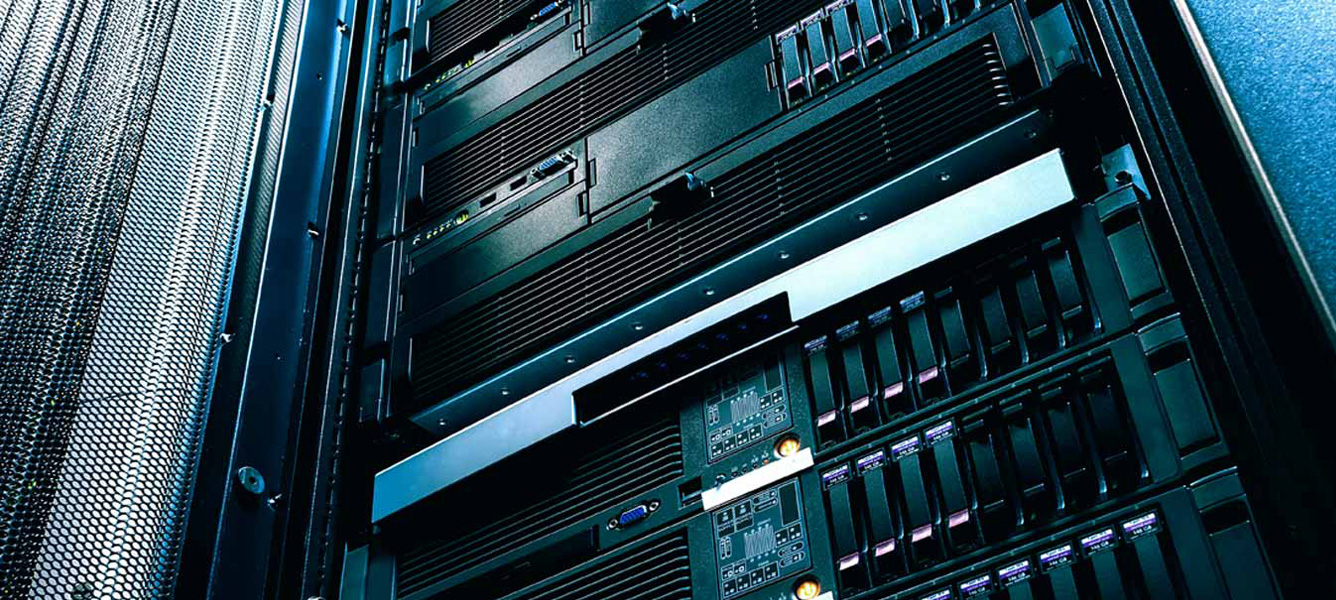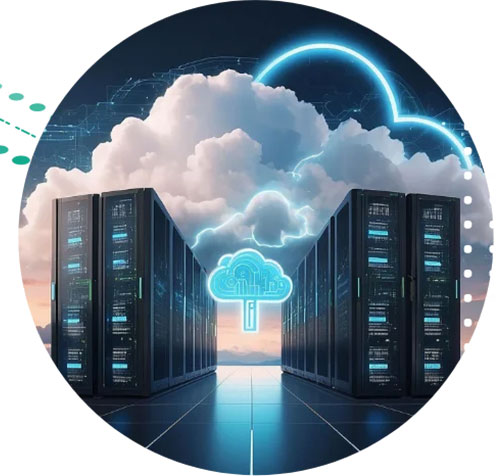Automated Recovery of SAP HANA Database using AWS native options
This blog exclusively covers the options available in AWS to recover SAP HANA Database with low cost and without using native HSR tool of SAP. With a focus on low costs, Sify recommends choosing a cloud native solution leveraging EC2 Auto Scaling and AWS EBS snapshots that are not feasible in an on-premises setup.
Solution Overview
The Restore process leveraging Auto Scaling and EBS snapshots works across availability zones in a region. Snapshots provide a fast backup process, independent of the database size. They are stored in Amazon S3 and replicated across Availability Zones automatically, meaning we can create a new volume out of a snapshot in another Availability Zone. In addition, Amazon EBS snapshots are incremental by default and only the delta changes are stored since the last snapshot. To create a resilient highly available architecture, automation is key. All steps to recover the database must be automated in case something fails or goes wrong.
Autoscaling Architecture
The following diagram shows the Auto Scaling architecture for systems in AWS.

Use Case
EBS Snapshots
Prior to enabling EBS snapshots we must ensure the destination of log backups are written to an EFS folder which is available across Availability Zones.
Create a script prior to the command to be executed for an EBS snapshot. By using the system username and password, we make an entry into the HANA backup catalog to ensure that the database is aware of the snapshot backup. We use the snapshot feature to take a point in time and crash consistent snapshot across multiple EBS volumes without a manual I/O freeze. It is recommended to take the snapshot every 8-12 hours.
Now the log backups are stored in EFS and full backups as EBS snapshots in S3 and both sets are available across AZs. Both storage locations can be accessed across AZs in a region and are independent of an AZ.
EC2 Auto Scaling
Next, we create an Auto Scaling group with a minimum and maximum of one instance. In case of an issue with the instance, the Auto Scaling group will create an alternative instance out of the same AMI as the original instance.
We first create a golden AMI for the Auto Scaling group and the AMI is used in a launch configuration with the desired instance type. With a shell script in the user data, upon launch of the instance, new volumes are created out of the latest EBS snapshot and attached to the instance. We can use the EBS fast snapshot restore feature to reduce the initialization time of the newly created volumes.
If the database is started now (recently), it would have a crash consistent state. In order to restore it to the latest state, we can leverage the log backup stored in EFS which is automatically mounted by the AMI. Additional Care to be taken so that the SAP application server is aware of the new IP of the restored SAP HANA database server.
Benefits
- Better fault tolerance – Amazon EC2 Auto Scaling can detect when an instance is unhealthy, terminate it, and launch an instance to replace it. Amazon EC2 Auto Scaling can also be configured to use multiple Availability Zones. If one Availability Zone becomes unavailable, Amazon EC2 Auto Scaling can launch instances in another one to compensate.
- Better availability – Amazon EC2 Auto Scaling helps in ensuring the application always has the right capacity to handle the current traffic demand.
- Better cost management – Amazon EC2 Auto Scaling can dynamically increase and decrease capacity, as needed. Since AWS has pay for the EC2 instances, billing model can be used to save money, by launching instances only when they are needed and terminating them when they aren’t.
Conclusion
This blog discussed how Sify can help SAP customers to save cost by automating recovery process for HANA database, using native AWS tools. Sify would be glad to help your organization as your AWS Managed Services Partner for a tailor-made SAP on AWS Cloud solution involving seamless cloud migration experience and for your Cloud Infrastructure management thereafter.
Fast-track your SAP’s Cloud Adoption on AWS, with Sify
Cloud computing (which later became known as just Cloud), one of the technology trends since last few years, has become a game-changer. Cloud offered a platform for organizations not just to host their applications but also to maintain it / manage it and charge organizations on a pay-per-usage model. This translated into getting rid of the Capex (Capital expenditure on hardware/servers) and instead, opting for the flexible Opex (Operating Expenses) model which also helped organizations in slashing the manpower budget.
The biggest advantage of Cloud is its scalability – freedom to add/reduce storage/compute/network bandwidth as per the need within an agreed SLA-framework.
The rise of Cloud adoption led to two categories:
- Cloud as a hosting platform
- Cloud-based software/applications
Cloud as a hosting platform
This is more popularly known as Platform-as-a-Service (PaaS) or Infrastructure-as-a-Service (IaaS) wherein the service provider offers bundled services of Compute, Storage, Network & Security requirements.
Cloud providers deliver a computing platform, typically including operating system, programming language execution environment, database, and web server. Application developers can develop and run their software solutions on a cloud platform without the cost and complexity of buying and managing the underlying hardware and software layers.
Based on the deployment options, Cloud is classified under Public, Private and Hybrid Cloud, which vary due to security considerations.
Why AWS
With some PaaS providers like AWS, the underlying compute and storage resources scale automatically to match application demand so that the cloud user does not have to allocate resources manually. They use a load balancer which distributes network or application traffic across a cluster of servers. Load balancing improves responsiveness and increases availability of applications.
As per a 2020 IDC study, over 85% of customers report cost reduction by running SAP on AWS.
Get consulting support, training, and services credits to migrate eligible SAP workloads with the AWS Migration Acceleration Program (MAP).
AWS has been running SAP workloads since 2008, meaningfully longer than any other cloud provider. AWS offers the broadest selection of SAP-certified, cloud-native instance types to give SAP customers the flexibility to support their unique and changing needs.
Whether you choose to lift and shift existing investments to reduce costs, modernize business processes with native AWS services, or transform on S/4HANA, reimagining is possible with SAP on AWS.
When you choose AWS, you will be joining 5,000+ customers who trust the experience, technology, and partner community of AWS to migrate, modernize, and transform their SAP landscapes.
AWS & Sify collaboration
While AWS has been a global leader in Public Cloud services, in India Sify Technologies (one of the pioneers in the ICT domain & India’s first SSAE-16 Cloud certified provider) had designed its own Cloud called ‘CloudInfinit’ way back in 2013 and since then has been helping diverse organizations in moving their ERP applications, especially SAP workloads to its Cloud, seamlessly.
With Sify’s cloud@core strategy, customers can enjoy all facets of Cloud with complete visibility and control.
SIFY’s SAP deployment flexibility ON CLOUD

SAP on AWS hybrid cloud solutions
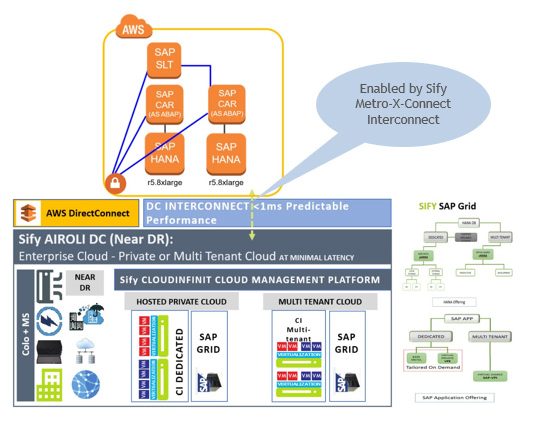
Use Cases
- Lifecycle Distribution: Separate Development and Test Environments
- Workload Distribution
- High Availability Deployments
Business Benefits
- Best of breed performance with Hybrid Cloud configuration
- Efficient integrations with extended ecosystems
- Compliance with data sovereignty
- Business continuity with resilience
- Simplicity with self service
- Operational efficiency with reduced IT administration
- Cost reduction with on-demand bursting to public clouds
Migration methodology
For SAP Migrations from on-premises or from any other Cloud to AWS, depending on various parameters like Prod. database size, available downtime window, source/target operating system/database, connectivity/link speed etc., we have been using various ways for seamless migration briefly explained below.

SAP SYSTEMS monitoring
Once SAP workloads are moved to AWS, Sify’s Managed Services takes care of every aspect, including monitoring the Operating System, Database, Connectivity, Security, Backup etc. as per the agreed SLAs. It also monitors the mission-critical SAP systems closely as depicted in diagram below.

Conclusion
Cloud, the scalable, flexible and yet robust hosting platform allows you to use your ERP workloads as well as SaaS applications effectively. Going by the increasing number of customers moving to Cloud, it is certain that Cloud is not vaporware, it is here to stay and only to grow bigger and safer by the day! It would also necessitate organizations to chart out a Smart Cloud strategy.
Embrace the Hybrid Cloud with VMC on AWS
According to Gartner, most of the midsize and enterprise customers will be adopting multi or hybrid cloud services. Companies have already realized that in order to move to the public cloud, it is important to structure workload in a hybrid cloud model.
Companies must understand that hybrid IT is not an easy methodology and therefore they must organize their existing IT resources and application workloads both on-premises and in public cloud efficiently to accomplish the goals of hybrid model. Additionally, they must also look for the right skills for different private/public clouds and different sets of tools from respective cloud and hybrid cloud managed services providers.
At Sify, we define some guidelines and structures to right-fit your workloads in the hybrid cloud. Please read on to know how Sify can help customers identify the right cloud (from the set of appropriate private and/or hosted private cloud services) for different sets of workloads.
Learn why we are one of the most trusted providers of hybrid cloud managed services globally. Read about our hybrid cloud managed services offering to know more.
Unique Challenges in Hybrid Cloud and Hybrid Cloud Services
In hybrid cloud, there are some unique challenges that businesses need to address first. Key challenges that need to be addressed while designing solutions on Hybrid Cloud are mentioned herein.
- Generally, it is very difficult to identify the most suitable cloud environment and manage the cost of different clouds.
- Though all cloud environments are powerful in providing features like scalability and elasticity, however the process of managing a hybrid cloud is quite a complex task.
- Security Risks: The threat of data breach or data loss is perhaps the biggest challenge faced during hybrid cloud adoption. Generally, companies prefer on-premises private clouds to protect data locally. However, in order to ensure top-tier security of data and applications on hybrid cloud, companies must draft robust data protection policies and procedures.
How can you migrate your workloads seamlessly to hybrid cloud? Read about our cloud migration services and hybrid cloud managed services offering to know how we can help.
Identify Applications for Hybrid Cloud
It is very important to identify applications for hybrid cloud, and your decision must be based on application’s architecture, behavior and user accessibility. Below are some key points to remember while designing an effective hybrid cloud strategy: –
- Consider the compatibility of applications before deciding whether you want to continue running the applications in an on-prem cloud environment or migrate them to Public Cloud.
- Identify the running cost/budget for an application and compare it with different cloud providers to choose the most suitable cloud platform that suits your budgetary outlines and business requirements.
- Pay due attention to licensing requirements before migrating to Public/Private Cloud because a minor loophole in this aspect can have a major impact on the overall business.
- Relook experience of existing IT teams to manage different Private/Public clouds seamlessly.
Not sure how to take the first step? Connect with us to explore our proven capabilities in hybrid cloud services, cloud migration services and hybrid cloud managed services. Click here.
Why VMC on AWS as Hybrid Cloud Choice?
VMware Cloud (also called as VMC) on AWS brings VMware’s enterprise-class Software-Defined Data Centre software to the AWS Cloud and enables customers to run production applications across VMware vSphere-based private, public, and hybrid cloud environments, with optimized access to AWS services.
AWS is VMware’s preferred public cloud partner for all vSphere-based workloads. The VMware and AWS partnership delivers a faster, easier, and cost-effective path to the hybrid cloud while allowing customers to modernize applications enabling faster time-to-market and increased innovation.
New Amazon EC2 i3en.metal instances for VMware Cloud on AWS, powered by Intel Xeon Scalable processors, deliver high networking throughput and lower latency so you can migrate data centers to the cloud for rapid data centers evacuation, disaster recovery, and application modernization.
VMC on AWS can be the right choice because VMware has been a trusted virtualization platform for many years in the industry and enterprise VMware ensures that all your applications run seamlessly. Plenty of companies are already running on VMware platform and have applications running on it. Below are some key identifiers for VMC on AWS:
- VMware SDDC is running on bare metal, which is delivered, operated, supported by VMware
- On-demand scalability and flexible consumption
- Full operational consistency with on-premises SDDC
- Seamless workload portability and hybrid operations
- Global AWS footprint, reach, and availability
- Native AWS services accessibility
Explore Sify’s expertise in the hybrid cloud and hybrid cloud managed services space. Click here.
How VMC on AWS Solution Works
VMware Cloud on AWS infrastructure runs on dedicated, single tenant hosts provided by AWS in a single account. Each host is equivalent to an Amazon EC2 I3.metal instance (2 sockets with 18 cores per socket, 512 GiB RAM, and 15.2 TB Raw SSD storage). Each host is capable of running many VMware Virtual Machines (tens to hundreds depending on their compute, memory and storage requirements). Clusters can range from a minimum 3 hosts up to a maximum of 16 hosts per cluster. A single VMware vCenter server is deployed per SDDC environment.
How do We Access AWS Services?
For companies that are using VMware Cloud on AWS (VMC) as a production environment for their business-critical application, it will require connectivity to an AWS account. This is enabled by an AWS elastic network interface which provides a 25Gbps connectivity between VMC and AWS. Applications deployed on VMC can leverage native AWS services for storage, EC2 instances, RDS Databases, load balancing and DNS routing, etc., providing customers with the best of both worlds. These native services can be accessed from applications deployed on VMC and include:
- Simple Storage Service (S3)
- Elastic File Service (EFS)
- Amazon Relational Database Service (RDS)
Sify’s Value Propositions to Help Customer Who are Looking for Hybrid Cloud Services
Sify has been in the Cloud industry since 2012 and has its own cloud for enterprise customers which can be tailored based on the requirement. Over the last few years, Sify has been involved in large enterprise customer requirement understanding, solutions & implementation across Private, Public & Hybrid Clouds.
Sify has dedicated, experienced and certified SMEs involved during solution stage and implementation and to provide operations services which will enable businesses to accelerate the adoption of Hybrid Cloud.
Our approach is to identify potential use cases for Hybrid Cloud options for VMC on AWS and native AWS services during the initial assessment and design phase, and we also suggest the most suitable services that can help customers meet the strategic goals. These services include the following:
- Discovery Workshop
- Assessment
- Build and Migrate
Feel free to contact us to provide your organization with tailored solutions with the required support across the various stages of the setup of VMC & AWS and migration of workloads.
Leveraging CloudEndure in the migration to AWS Cloud
With the increased demand in scalability and flexibility of the infrastructure for organizations to ramp up and speed up the go-to-market approach, it has become necessary to adopt the Public Cloud which can tackle this challenge efficiently. Therefore, businesses are looking for simple, reliable, and rapid migration of on-premises workload to Public Cloud, i.e., public cloud migration services, with minimal disruption. Sify, being an AWS Advanced Partner, has successfully carried out many large cloud migration services for several customers using CloudEndure and the best practices it brings in.
With over two decades of experience in comprehensive IT infrastructure services, Sify consistently ranks high among the leading cloud computing companies in India. Know more about our capabilities in cloud migration services, AWS CDN services and more.
CloudEndure is one of the SaaS cloud migration solution services from AWS to migrate workloads from any source (physical, virtual, or private/public cloud) to AWS, from one AWS region to another AWS account (within the same Account), and across different AWS accounts. It uses block-level continuous replication to replicate data on to the target AWS environment.
To know more about Sify’s AWS capabilities, including our lightning-fast AWS CDN service and AWS CDN pricing, click here.
To replicate data from source machine to target machine, we need to install an agent on the source machine and should have the required CloudEndure license for migration. The migration license has an expiry date post which the data replication stops.
The Continuous Data Replication task is performed and pushed to the staging area (includes Replication Server, EBS Volume, S3 Storage, Subnets and IP). The CloudEndure Service Manager ensures the co-ordination among the Source Machine, Replication Server and the Target Server.
Explore why Sify is frequently rated high among the leading cloud managed services providers across the globe. Know more about our public, private, multi- and hybrid cloud managed services capabilities.
Three points of contact for CloudEndure’ s components with the external network:
- The CloudEndure Agent needs to communicate with the CloudEndure Service Manager.
- The CloudEndure Agent needs to communicate with the CloudEndure Replication Servers.
- CloudEndure Replication Servers need to communicate with the CloudEndure Service Manager and S3.
CloudEndure helps you overcome below migration challenges effectively:
- Diverse infrastructure and OS type
- Legacy application
- Complex database
- Busy continuously changing workloads
- Machine compatibility issues
- Expensive cloud skills required
- Downtime and performance disruptions
- Tight project timelines and limited budget
Find out how Sify’s cloud migration services bring the assurance of high rates of success. Know more about our public, private and hybrid cloud managed services and migration capabilities.
Best migration practices for cloud migration services that CloudEndure recommends:
Planning
- Begin by mapping out a migration strategy that identifies clear business motives and use cases for moving to the cloud.
- Migrate in phases/waves or conduct a pilot light migration in which you start with the least business-critical workloads.
- Do not perform any reboots on the source machines prior to a cutover.
- When scheduling your cutover, ensure that you allow enough time for data replication to complete and for all necessary testing to be carried out.
Licensing
- Ensure that you have sufficient migration licenses for your project.
- CloudEndure Migration license is free for 90 days of use following agent installation on the source machine.
- While the use of CloudEndure Migration is free, you will incur charges for any AWS infrastructure that is provisioned during migration and after cutover, such as compute (EC2) and storage (EBS) resources.
Testing
- Check and optimize the network needed for migration.
- Perform a test at least one week before you plan to migrate your source This time frame is intended for identifying potential problems and solving them, before the actual cutover takes place.
- Train the staff early on CloudEndure and mitigate any risk during the testing phase only.
- Ensure connectivity to your target machines (using SSH for Linux or RDP for Windows) and perform acceptance tests for your application.
Successful Implementation
- Cutover the machine on the planned date.
- Carry out the acceptance test for the application migrated and functionality.
- Remove Source machines from the console after the cutover has been completed in order to clean up the staging area, reduce costs, and remove no longer needed replication resources.
Learn more about Sify’s cloud migration solution services and why we are a leader among cloud managed services providers. Click here.
Use cases
The Most Common uses cases for CloudEndure Migration are:
- Lift and Shift, then optimize
- Vast majority of Windows/Linux server when agent can be installed on source machine
- Replicating Block Storage devices like SAN, iSCSI, Physical, EBS, VMDK, VHD
- Replicating full machine/volume
Conclusion
You must keep these above points in mind while migrating to AWS using CloudEndure to reap the desirable outcomes. Sify would be glad to help your organization as your AWS Managed Services Partner for a tailor-made solution involving seamless, cloud migration experience and for your Cloud Infrastructure management thereafter.
Re-Architect your Network with Sify
Integrate your Cloud, Core, and Edge
With the advent of IoT, pervasive mobility, and growing cloud service adoption, the network has become increasingly distributed, and the need for faster compute and connectivity at the edge has become more pronounced.
As organizations increasingly drive digital transformation initiatives and adopt hybrid multi-cloud, the network must be rearchitected to support new-age topologies. Hence, Network Transformation gains predominance. Network Transformation and re-architecture must play out at all the 3 points of presence of the Network – at the Network Core, Network Management layer, and the Network Edge.
Let us look at the significance of the Transformation at these 3 layers and the contribution that Sify is bringing at each of these points of presence.
Transformation at the Network Core
With Cloud adoption, Data Center is no more the Core of the network. As enterprises are moving their applications to the cloud on consumption-based models for enhanced business productivity, it has become important to secure connectivity to the Cloud and extend the Quality of Service to a hybrid multi-cloud environment. Hence, the transformation of the network at the Core is essential for improved agility, enhanced productivity, and scalability.
Sify’s Transformation Services at the Core are designed to help customers harness the true potential of cutting-edge cloud, digital, and network technologies. We help our customers accomplish their transformation goals and meet dynamic business requirements capably by providing Cloud Interconnect networks, which enable customers to establish direct connectivity between their private and public cloud infrastructure and fully realize the benefits of hybrid cloud architecture. With our Hyperscale Cloud partnerships and the Cloud Interconnect Networks, combined with expertise to deploy technologies like SDWAN & NFV, we hold a distinct level of expertise in network integration and transformation for a hybrid multi-cloud environment.
Transformation at the Network Management and Control Layer
As networks become more & more complex, organizations nowadays are leveraging multiple network service providers, and they have distributed nature of applications and end-users. This has resulted in a very complex network architecture. Moreover, monitoring and management of these complex and distributed networks and network elements have become very critical. Network Management & Control requires a distinct level of expertise, advanced tools, and automation platforms, and hence makes good business sense to outsource the management to an expert who has the benefit of scale, experience, and toolsets to deliver the same. The customer can in turn focus on his core business.
Empowered with a robust Network Operating Center, Sify offers a wide spectrum of Network Consolidation, Network Transformation, and Operations Outsourcing solutions. Sify can manage customer’s as-is WAN network architecture, provide 24×7 monitoring of links, undertake incident management, change management, and can yet ensure unified SLA management across multiple service providers in a single-window provision. Not only this, but Sify also helps customers in network study & assessment and consulting for Network Re-Architecture and Managed Services.
Transformation at the Network Edge
Network Edge is the bridge between an organization and its end customers to deliver enhanced user experience and employee productivity. It is a strategic gateway to connect widely distributed organizations. The traditional networks cannot accommodate the new IoT devices, sensors, and plethora of Edge devices that are connected and managed at the Edge. Therefore, it is crucial to adopt transformation of the network at the edge to meet the requirements of the end devices and make them an integral part of the Enterprise Networks.
Sify Edge Connect Services include advisory services like an assessment of customer requirement with respect to coverage and performance. Further, we ensure end-to-end implementation of customer’s WiFi network, which includes configuring guest access and incorporating employee authentication & access. Our highly secure platform provides insight into user patterns and analytics such as the location of users, applications browsed, etc. Sify also provides deep visibility and control of the performance and usage of applications. In addition, Sify Edge Services include IoT services and aggregation and integration of the same with the Enterprise Network.
While rearchitecting your network, it is important to include aspects connecting the above three points of presence of users and applications. This will help you architect a network that delivers efficiency and is future-ready. However, the majority of organizations lack the necessary skills and expertise to envision and manage such a complex transformation, and that is where Sify Technologies can be your partner in this transformation journey.
What makes Sify the preferable partner for Network Transformation?
Sify is the largest Information and Communications Technology service provider in India, serving 10,000+ businesses across multiple industries with its impeccable Cloud and Data Center services, Network services, Security services, Digital Services, and Application Services. Our industry-wide experience of working with diverse clients, skilled workforce to manage varied network transformation projects, and the Technology Partner ecosystem, makes us the most trusted Network Transformation partner for India Enterprises.
Today, Network Integration, Network Transformation, and Managed Services are the key differentiators. That’s where Sify can help businesses achieve their strategic goals. As a strong, capable ICT transformation partner, Sify brings in the integrated skillsets, processes, and tools that are required for a seamless transition in a cost-effective way. Add to this, Sify’s engineering capabilities are the best in class and help our customers design innovative solutions that are custom-built to suit their business needs.
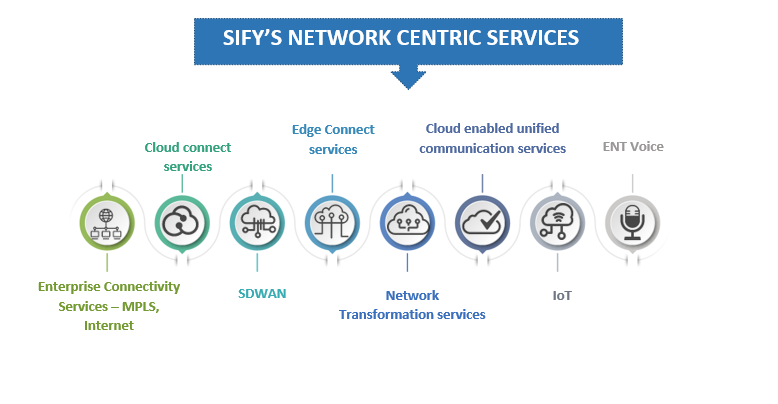
Embarking on a successful Microsoft Cloud journey with Sify
In the digital age, migration to Cloud has become the top-most priority for businesses across realms. We are seeing major shift in the number of ‘Cloud Hostile’ customers turning into ‘Cloud Friendly’ & ‘Cloud Ready’ customers and pondering on the best plan to implement the migration successfully.
Know more about Sify’s offerings in the cloud migration services space.
One of the major reasons behind this trend – besides performance, security, and cost – is agility & flexibility which help in faster business innovations. Organizations have started transforming themselves digitally to drive business value and grow business with enhanced end user experience.
Over the past few years, Microsoft has earned massive popularity among organizations worldwide for being a leading Cloud and cloud managed services provider with – Azure, Microsoft 365 (M365) and Microsoft Dynamics 365.
Microsoft Azure is a highly productive, hybrid, and intelligent Cloud that allows you to leverage the power of cutting-edge digital technologies to build, deploy and manage critical applications as per your company’s requirements. It also provides Cloud enhanced services like AI/ML, RPA, Analytics tools, and integrated Cloud resources to make your organization more agile and improve top-line performance.
Learn more about Sify’s capabilities in the Microsoft Azure managed cloud services domain.
Considering the above benefits, many forward-looking businesses are exploring Azure Cloud-powered services and Azure managed cloud services to optimize internal processes and generate new business models. However, this digital aspiration is incomplete without transforming the technology landscape first. A strong technology foundation provided by Microsoft will help you connect your disparate data, processes, users, and applications to accomplish the end objective of organizational excellence.
Achieving all these is not as simple as it may seem initially! That’s where, Sify’s consultative approach and Azure managed cloud services capabilities can help you leverage the true value of Microsoft Services and align your organizational roadmap with the ever-evolving technology landscape.
Explore why Sify ranks high among the leading cloud managed services providers across the globe. Know more about our public, private, multi- and hybrid cloud managed services capabilities.
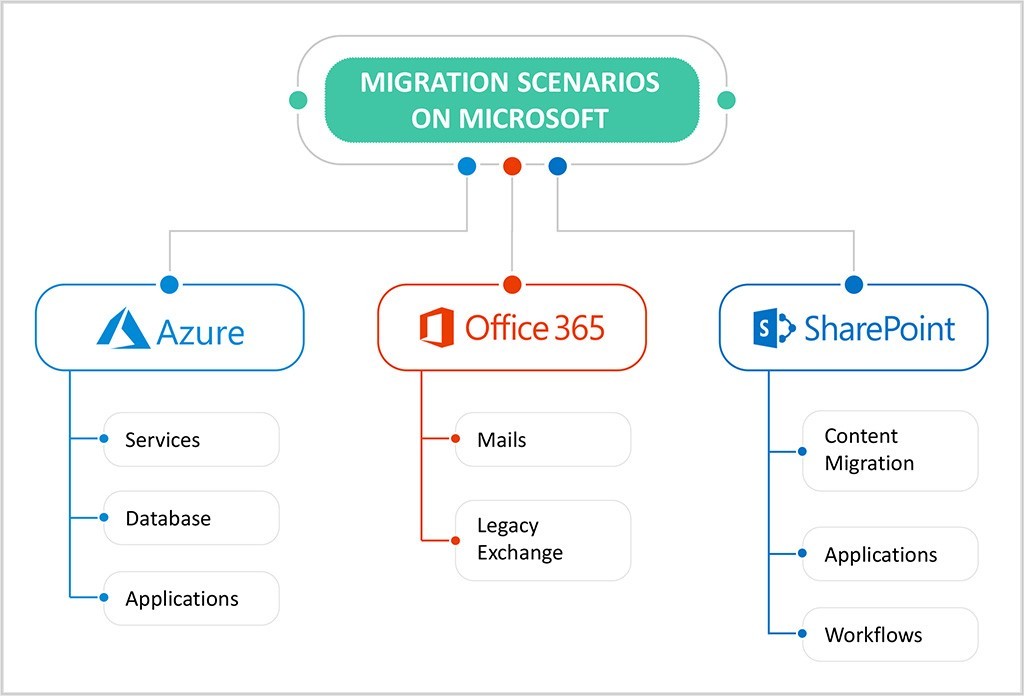
Azure Migration: The most successful path
Different organizations have distinct approach towards Cloud migration and need different types of cloud migration services, and their decisions are governed by business specific priorities and constraints. You must know that Cloud migration services involve significant organizational change management across people, process, and technology. It’s very important to draft a holistic approach to migrate successfully and realize the benefits of efficiency, agility, and cost.
Sify’s cloud migration services for Azure
As a trusted partner among cloud managed services providers globally, Sify offers unmatched capabilities in cloud migration services. With Sify as your strategic partner for cloud migration services, you are perfectly positioned to draft, implement, and monitor the overall migration plan in the most successful way. Our team of Cloud experts, Azure certified professionals, cutting-edge toolchains, and partner ecosystem can help you accomplish migration goals successfully. Our cloud migration services can help you across all three phases of migration – assessment, migration, and optimization.
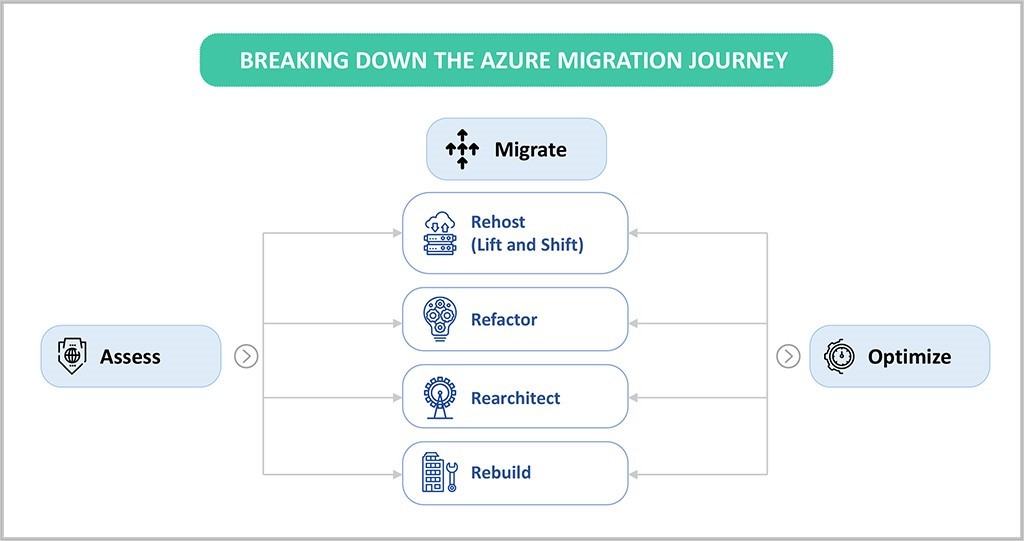
Assessment: This is the first phase of migration journey, which includes assessing and discovering your on-premises apps, data, and infrastructure. Our comprehensive range of cloud migration services and assessment services can help you map dependencies across applications and decide their priority of Azure migration for a seamless journey.
Migration: The actual cloud migration begins in this phase, where you start moving your apps, data and infrastructure – leveraging the best-suited cloud migration services, strategies and tools. Our cloud migration services will help you automate the entire migration journey (depending upon your IT specific needs) and minimize the downtime.
Optimization: Once you have moved to Cloud, it becomes important to monitor your Cloud resources continuously for better performance, enhanced security, and reduced cost. Consistently ranked among the leading cloud managed services providers, our managed services will help you maximize your ROI and leverage unified visibility of Cloud resources for efficient resource utilization and optimization.
Explore how Sify’s cloud migration services bring the assurance of high rates of success. Know more about our public, private and hybrid cloud managed services and migration capabilities.
Sify + Azure Advantage
- Single window solution provider (Network, Security, Azure IT and Management)
- End-to-end Azure service coverage: Access – Architect – Migrate – Manage – Secure
- Integrated Azure network and security proposition
- Unified Dashboard across Azure IT
- Simplified Execution and single point of ownership
Know more about transforming your IT Infrastructure with Sify’s Microsoft Azure managed cloud services capabilities.
Microsoft 365 – Mail migration
With Office 365 becoming the de-facto mode for conducting business, it is important to modernize the underlying infrastructure and platform. It is imperative for enterprises to move their legacy exchange and other mailboxes to Office 365 in order to reap full benefits of their workflow optimizations. Additionally, Office 365 offers the benefit of pay per use pricing for optimizing cost.
So in case, you are exploring the possibilities to conceptualize and implement your cloud migration in the most success-driven manner, Sify can help you embark on a successful Microsoft Cloud journey.
Our Accreditations
- Microsoft Certified Partner for Cloud & Managed Services
- Certified Deployment Partner for deployment of M365 & Azure services
- Express Route Partnership for seamless connectivity with MS Cloud Azure & Microsoft 365
- Certified team for Migration & Deployment of MS SQL workloads
- Certified team for deployment of Hybrid Cloud Platform
Simplify Your Network Transformation
Simplify your Network Transformation with Sify
The business world is witnessing an unprecedented transformation as organizations across verticals are passionate to embrace new technologies. Cloud, Analytics, Automation, Internet of Things, Artificial Intelligence, and Machine Learning are some major forces that are enabling enterprises to deliver a top-tier experience to customers. As organizations nowadays are highly reliant on these emerging technologies to achieve organizational excellence, one must acknowledge that all cutting-edge technologies require an intelligent and robust network. There are numerous factors that are fundamentally redefining the ways new-age networks work and function. The emergence of new global trends and multiple new technology trends have compelled organizations to demand more from networks. This blog discusses:
- Major global and technology trends that have paved the way for network transformation.
- New-age network architecture and design for Intelligent Network services
- How Sify can help you in your network transformation journey with a wide range of Intelligent Network Services.
Global Business Trends leading to increased demands from Networks
- Hyperconnected Enterprises:
In the digital age, global organizations rely on a multitude of connections for geographically distributed people, processes, and devices. Also, the increasing adoption of hybrid and multi-cloud has compelled global enterprises to become hyperconnected. For such hyperconnected enterprises, a scalable network is quite critical to deliver top-tier services to customers across the globe through digital technologies. - Digital Business Transformation:
In line with their digital ambition, organizations worldwide are looking to leverage Cloud-native technologies such as analytics, mobility, IoT, AI, and ML to modernize and develop new processes, services, and models for generating new revenue streams. An intelligent and adaptable network can quickly adjust according to evolving requirements, facilitating seamless transformation. - Automation and Robotics:
Several enterprises rely on Automation, Robotics, and Robotic Process Automation to improve operational efficiency, quality of services, and customer satisfaction score. The use of Automation and Robotics in the coming years will continue to surge as companies look to improve quality, workforce productivity, customer satisfaction, and more. This is even more relevant than ever in the pandemic-stricken world. As automation of processes is time-sensitive and mission-critical, enterprises will need round-the-clock availability and reliability from their distributed networks as even a minor lapse in network availability or reliability can potentially hamper the process flow and affect overall efficiencies and customer satisfaction.
Technology Trends powering fundamental Network Transformation
- Applications being modularized and distributed across Clouds: Recently, hybrid Cloud and microservices have gained massive prominence across business verticals. The majority of software applications are being modularized and distributed across public Clouds and network edge. To support applications across such a distributed landscape, the network needs to transform fundamentally. There is a need for Networks to be agile, seamless, secure, and responsive to dynamic application landscapes.
- IoT and M2M integration with mainstream Networks: The exponential rise in the number of IoT devices worldwide highlights the need for smart Machine-to-Machine communication. This means the network must capably provide connectivity to all the IoT devices and integrate them smartly with mainstream networks.
- Pervasive Mobility: Owing to the anywhere data center and anywhere user access, there is a need for a robust network to allow users to access applications on Cloud. As anticipated, mobile users will continue to grow in the years to come and they would need round-the-clock high-performance connectivity to access applications on Cloud from private devices over Wi-Fi or 4G networks. Therefore, to cater to this rapidly growing mobile population, it becomes imperative to strengthen the Edge connectivity to these vast diverse, and distributed user base. Edge Transformation is predicted to be the next big wave in the Networking space. As per Gartner – by 2025, 75% of enterprise-generated data in industrial settings will be created and processed at the edge.
- Immersive video experience: User experience has taken the center stage in the digital era, therefore enterprises are keen to make the video experience more immersive. They have started leveraging the power of digital media technologies, Virtual Reality, Augmented Reality, and immersive 3D environments to ensure a top-tier experience. This is placing greater demands on enterprise networks as video experience is totally dependent on low-latency and high availability infrastructure. Moreover, enterprises also want their networks to provide end-to-end bandwidth and dynamic performance controls to further make the experience more enriching.
New-age network architecture and design for Intelligent Network Services
In response to emerging trends and the fast-changing IT landscape, organizations need to rethink network architecture and design strategies to drive digital transformation. It becomes quite critical to align network capabilities in accordance with the changing business requirements and modern topologies. In this light, some of the expectations from Intelligent Network Services are the following:
- Support the fast-changing set of users, applications, devices, and services and unify them intelligently for top-tier user and application experience
- Seamlessly connect between distributed IT assets and applications in a DC and hybrid multi-cloud environment
- Leverage Software and other functionalities to control, rather than physical access and distributed policy control
- Leverage the cutting-edge technologies and algorithms to collect, assimilate, analyze, and visualize networking information in real time for better visibility and control
To achieve the above objectives, there are 3 broad aspects that the IT leaders must follow while designing and architecting the new-age network architecture.
Networking architecture for anywhere Data Center:
Organizations nowadays have their applications and data spread across Data Centers, Clouds, and Edge environments in diverse geographical regions. To meet the requirements of this diverse hybrid ICT landscape, organizations need new networking architecture that is ready for Cloud, meets application connectivity demands, and ensures technology and operational consistency across locations. Therefore, the new-age network must facilitate faster and safer modes of data transfer across Data Centers, Cloud, and Edge devices. This highlights the significance of Cloud-ready Networks with DC Interconnects and Cloud Connect capabilities.
Being a trusted ICT company, Sify ensures a Cloud-ready Network, comprising of Data Center Interconnects, Hyperscale Cloud Connects, and Internet Exchanges for carrier neutrality. Our Cloud-ready Network provides you with deterministic and secure connectivity to move applications, middleware, and database workloads between private infrastructure and Cloud for improved application performance.
Hybrid WAN and Application performance-focused Network Architecture:
In the age of hybrid and multi-cloud, it becomes critical for organizations to have a well-thought-out network strategy for distributed workloads, data footprints, applications, services, and microservices. With the rise in multi-cloud adoption, the legacy hub-and-spoke WAN architecture can hold organizations back. The shift from Data Centers towards Cloud has resulted in the more prevalent use of the SLA-defined Internet (in addition to MPLS) as a reliable and pervasive way to establish robust connectivity. Hence, modern-day businesses need a hybrid WAN strategy – the use of internet for business applications along with MPLS. This means the new-age network must enable the hybrid WAN and be smart enough to adapt to the changing application performance demands in a hybrid or multi-cloud environment, ensuring better performance.
Herein, Software Defined Networking can enable fundamental network transformation. SDN can help accomplish the goals of network transformation – agility, flexibility, and application centricity – by intelligently controlling the network architecture using software applications.
- Software Defined Networking facilitates flexible network architectures, which can utilize multiple network connectivity options (MPLS/ILL/BB/4G-LTE/Internet) which help leverage a Hybrid WAN strategy for the evolving DC and Cloud landscape
- SD-WAN ensures application awareness and complete visibility of site-wise utilization of various applications, which paves way for better performance, availability, and security.
- SD-WAN leverages the power of Cloud-based monitoring and management platform for centralized, real-time visibility of all resources.
- SD-WAN solutions can be easily integrated with legacy network architectures, which enable phase-wise migration of sites.
Sify’s SD-WAN platform is hosted in Secure Cloud, and our experts perform all the monitoring and management functions from the state-of-the-art NOC. This helps you maintain distance with different configuration tasks at branch sites and focus on your core business. Our SD-WAN solutions – coupled with end-to-end Managed Network Services – drive efficiencies, reduce cost, and optimize multi-cloud connectivity.
Centralized visibility, control, and insights of the Network:
Organizations need complete visibility and control over network connectivity to make the most of their Cloud investment. They would also want their network to provide intelligent insights that enable data-driven decision-making. An intelligent network can help businesses with automated and effortless orchestration of network resources. However, enabling a network with comprehensive intelligence is not as simple as it seems, because it requires a well-established network management practice with well-integrated toolsets.
Currently, only a few network service providers, such as Sify Technologies, have the assets, capabilities, and expertise to deliver Intelligent Network Services. We ensure centralized management of the network, powered with the capacity of SDN, to bring in the highest level of visibility and control of the entire network landscape. We offer a comprehensive range of Network Management Services on flexible outcome-based models – shared NOC Services, Hybrid NOC Services, and Dedicated NOC Services – from our state-of-the-art Network Operating Center.
Sify’s network experts ensure 24×7 proactive monitoring and management of network connectivity of devices such as routers, switches, and firewalls, and provide comprehensive reporting of various network parameters such as availability, performance, and security.
Conclusion
The emerging business and technology trends have compelled enterprises to empower their network with inherent intelligence built into them. This needs fundamental network transformation and re-architecting from the ground up, to suit evolving DC and Cloud landscape, distributed/mission-critical applications, and network orchestration needs.
Being a strategic network transformation partner, Sify helps you transform your network into a robust and intelligent asset. We provide Intelligent Network Services which include Cloud-ready Networks, Software-defined WAN, and centralized Network Managed Services, to accelerate your digital transformation with the robust foundation of a fast, secure, and future-ready network.
Simplified Cloud Adoption for SAP S/4HANA
Let Sify, your Cloud expert manage your SAP Migration

Every transformation journey begins with adoption of digital technologies on Cloud. Forward-looking organizations worldwide are looking for Cloud-powered solutions to attain the highest level of business agility, scalability, and compliance in the most cost-effective way. Additionally, Cloud-powered solutions facilitate access to new generation technologies, such as IoT, AI, and ML, which help you achieve your transformation goals in an outcome-focused manner.

SAP S/4HANA is a modern business solution suite that fosters intelligent innovations, business process improvement, and IT landscape transformation, without any upfront capital investment in infrastructure, database, hardware, etc. Moreover, it comes with pervasive data modelling capabilities and simplified deployment roadmap options.
Cloud adoption for SAP S/4HANA
Powered with Cloud and Analytics, SAP S/4HANA is undoubtedly a comprehensive, intelligent business suite delivering to organizations, unique insights, and intelligence. However, moving to SAP S/4HANA is not as simple as it may seem initially. It is dependent on your insight and capability to fundamentally examine your business processes, infrastructure, and data. Furthermore, you need to reconsider your business objectives and project priorities to achieve seamless migration to Cloud and realize all its benefits.
To evaluate how SAP S/4HANA can benefit your organization, it is always sensible to assess the consumption and configuration of your existing SAP environment. Subsequently, you need to create a migration to Cloud roadmap for seamless technical deployment, depending on project specific requirements, strategic transformation goals, etc.
Irrespective of the approach you choose, be it New Implementation or System Conversion, there are various advisory tools, such as Business Scenario Recommendations, Readiness Check Tool, etc. that can help you gain the necessary insight and confidence to simplify your move to SAP S/4HANA. After gaining clarity, you should continue forward with your S/4HANA adoption on Cloud in a phase-driven manner.
Five phases of successful SAP S/4HANA Cloud journey

Re-evaluate your current stage and develop a vision:
Before you start your Cloud journey, answer the reasons behind it. You need to evaluate your current IT landscape, analyze your business strategy, consider cross-functional dependencies, and develop a strategic vision before moving to SAP S/4HANA. Herein, Business Scenario Recommendations (BSR) for SAP S/4HANA can help you generate a comprehensive report on how your current system would be impacted and how you should prepare adeptly to derive true value propositions.

Explore the value of SAP S/4HANA:
Once you have evaluated your business landscape, you must start exploring all the value propositions of SAP S/4HANA that can help you transform the overall IT landscape and improve business processes. Mapping key business functions is yet another major area you need to consider while analyzing the values of SAP S/4HANA. SAP Innovation & Optimization Pathfinder can help you analyze all the business improvement opportunities. It also provides rich analysis of innovation recommendations, innovation acceleration, and IT optimization.

Future State Design:
During this phase, you need to start focusing on the technical aspects of your migrating specific parts of your IT landscape or processes to SAP S/4HANA. It is always advisable to define processes and IT landscape that you think are suitable for SAP S/4HANA in order to devise a future-ready migration layout. During this phase, organizations count on different tools such as Readiness Check and Maintenance Planner. Readiness Check highlights the required solution adjustments that are needed for system conversion. Maintenance Planner generates the stack file online from SAP marketplace, which is required to download the SAP S/4HANA software.

Migration and roadmap:
Before the transition begins, you need to outline clearly defined migration strategies to identify, evaluate and select the best migration scenario. To attain seamless transformation and successful SAP S/4HANA migration, you must define the strategy that best suits your vision depending on your current IT stage.

Plan S/4HANA Implementation:
The actual transition begins in this phase, and you must embrace a high-level project management approach to successfully migrate to SAP S/4HANA. As majority of organizations lack technical skill, competence, and expertise to implement such a project, it makes good business sense to collaborate with an expert.
Why Sify for SAP migration, infrastructure, and management?
It is important not to get overwhelmed by the adoption complexity, as finding the right partner will alleviate most of your concerns. Sify has a rich experience and all the state-of-the-art tools required for successfully migrating heterogeneous or homogeneous SAP workloads and managing them.
Sify provides you the option of choosing the most appropriate environment for your SAP workloads. You can host your SAP workloads on HANA grid (which is certified by SAP) on Sify’s proprietary Cloud – CloudInfinit. You also have the choice of deploying it on a Hyperscaler (AWS, Azure, etc.) with DR on Sify’s SAP grid or vice versa to leverage the benefits of Hybrid Cloud. Furthermore, we hold a distinct level of specialization in ECC to S/4HANA conversions, implementation and carve out scenarios. Sify’s integrated play across Network, Cloud and SAP ensures that you get flexibility, agility, and choice for comprehensive coverage of all your SAP needs.
Snapshot of Sify’s SAP offerings
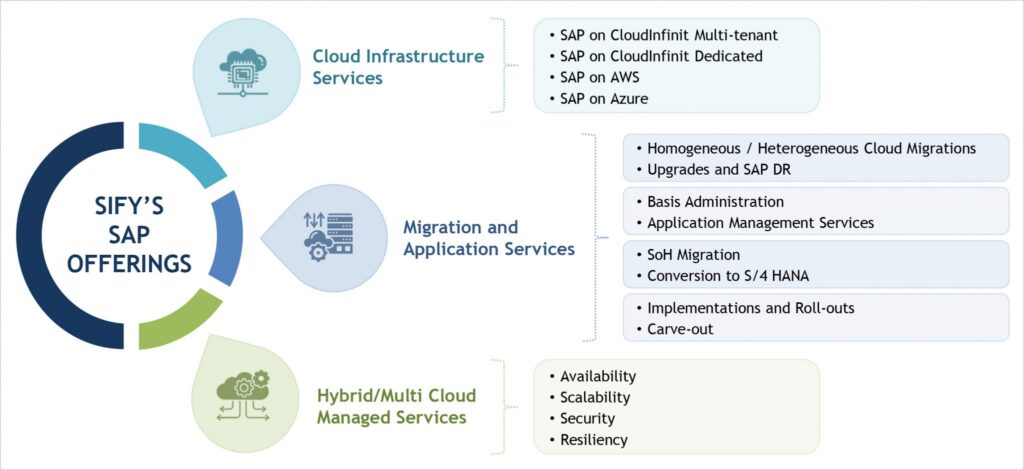
Migration to Oracle Cloud: common pitfalls and best practices
Count on Sify to accomplish your migration goals
Enterprises worldwide are in a quest to leverage the true potential of the Cloud. As Cloud allows organizations to unify disparate business functions, streamline processes, enhance organizational efficiency, achieve resilience, and control cost, decision-makers across the business world are looking for the most suitable Cloud and a competent Cloud partner.
Herein, Oracle Cloud has certainly been able to garner attention by helping organizations optimize IT infrastructure, achieve operational excellence, and reduce cost significantly. Oracle ensures a very unique value proposition as it uses the same on-premises products and tools for Cloud. It is built from on-prem deployments, unlike other Cloud providers which started with a Cloud-native approach only. As organizations transition their processes, business functions, or implement a complete transformation to the Cloud, the “integration” between different Cloud and on-premise enterprise applications will be the focus. We know that not all enterprise applications will migrate to the Cloud at the same time, therefore it is imperative that existing on-premise integration is utilized to communicate between the on-premise applications and the Cloud applications via a common cloud integration platform. In such a situation, Oracle certainly ensures distinct advantages.
Oracle is the only cloud provider to offer guaranteed availability, management, and performance SLAs. Moreover, it also ensures greater control and visibility of Cloud resources, which further helps in improving top-line business performance. That’s why organizations are keen to migrate to Oracle Cloud.
However, organizations face distinct challenges and complications while executing the migration plan. As we work with organizations (across verticals) for their Cloud transition or migration projects, we have gained expertise in helping them identify all pitfalls and follow a trusted approach to create and implement successful migration to Oracle Cloud.
This blog highlights the major challenges faced by organizations during their migration journey to Oracle Cloud and the best practices to tackle those challenges. Furthermore, we shall discuss how Oracle Cloud, Sify’s hybrid IT-ready data centers (with Cloud Adjacent and Near Cloud data centers), and Network Services can help you accomplish your Cloud transformation goals competently.
 |
CHALLENGE: Not every workload is Cloud-ready for Lift-N-Shift |
 |
BEST PRACTICE: De-couple the workloads into different categories |
It’s a well-known fact that not all workloads can be migrated to Cloud using the same migration strategies. Therefore, Sify has come up with a comprehensive range of Cloud Assessment Services which help you decouple the workloads into two broad categories – the workload that must be migrated to Oracle Cloud and the workloads that can be hosted in Sify’s Hybrid IT-ready DC. This will help you draft the most appropriate and cost-effective Cloud adoption/migration plan.
 |
CHALLENGE: Inter-dependency between applications |
 |
BEST PRACTICE: Build migration specific business case for each application |
Sify’s Cloud Assessment and Migration Services help you identify inter-dependency between applications and build migration specific business case considering each application. Our Hybrid IT-ready data centers allow you to establish fast and secure interconnection among all your applications hosted in Oracle Cloud, without any network latency issue.
 |
CHALLENGE: How to deal with legacy applications |
 |
BEST PRACTICE: Leverage Cloud Integration Platforms for hybrid deployments |
As all enterprise applications cannot be migrated to Cloud due to architectures, dependencies, and cost, there needs to be effective integration between legacy and cloud applications. Sify is uniquely positioned not just with the ability to meet Network SLAs but also with the ability to design, implement and manage hybrid deployments with legacy on-premise applications and the Cloud applications, via a common Cloud integration platform leveraging Oracle technologies.
Count on Sify for a successful migration to Oracle Cloud
Sify complements Oracle’s public Cloud portfolio with its expansive service portfolio encompassing data center services, migration and assessment services, telecom, and managed services. This offers customers a holistic value proposition for their Cloud journey which no other service provider can offer.
With the Oracle Cloud data center co-located with us, Sify is in a unique position to offer customers the advantages of Oracle public Cloud and co-location of partial workloads from the same premises which are interconnected through a high speed, low latency, and highly secure ‘FastConnect’ link. This allows customers to go for their own hybrid data centers without having to worry about latency issues.
With our cloud@core strategy, Hybrid IT-ready Data Centers and Network Services offering <1ms latency for Hybrid deployments, we are the only Cloud Transformation partner that can help you leverage the true potential of hybrid Cloud. Our Hyperscale Cloud and Data Center Services, low latency, high bandwidth, and secure connections to Oracle Cloud ensure better performance at predictable costs. Moreover, our team of competent Cloud experts and Oracle-certified solution architects are willing to offer prescriptive guidance at every stage of your Cloud adoption and transformation, to help you achieve your Oracle migration goals.
Consolidate your Network with Sify
Rationalize, Scale, and Manage your network effortlessly.
In today’s technologically advanced era, enterprises across realms have complex ICT environments – virtual and geographically spread. The advent of Cloud and rise of multiple solution providers globally have encouraged organizations to pick and choose the perfect mix to host their applications, servers, and data across a diverse landscape of Data Centers and multiple clouds. This has benefitted organizations worldwide, in terms of ease of operations, higher level of flexibility and better speed to market. However, at the same time, one must acknowledge that management of such a highly complex ICT environment has become a major challenge for many organizations in the digital era.
Organizations must understand that all the components of their diverse IT and network infrastructure – consisting of applications, servers, machines, network peripheral equipment, sensors, or even distinct Cloud environments – are not discrete or isolated units anymore, but a part of a larger organization context, making them extremely valuable for business progression and business continuity. All these components must be unified and viewed in a consolidated way for better performance and security. That’s where, Network Consolidation becomes imperative!
Organizations that have complex ICT environments face distinct challenges that hamper their overall performance and efficiency. Some of the most common challenges in this changing and ever evolving Network and IT environment are:
- Multiple service providers management: Modern enterprises leverage a perfect blend of best-of-breed network solutions from distinct service providers as this ensures advantages of redundancy, resiliency, choice of network media, and connectivity to remote locations. However, managing all the distinct service providers is quite a challenging task and has some inherent problems, such as lack of ownership and visibility, inconsistency in services, inability to leverage analytics, and governance related risks.
- Limited in-house network management capabilities: This is another major concern for organizations across industry verticals. If they opt for establishing an in-house network management setup, then it becomes a very cost-intensive decision to hire the skilled workforce, procure the technology, develop the competence, and achieve a high level of scalability. Furthermore, an in-house setup would need hefty and timely investments to keep pace with evolving technology landscape.
- The demand for constantly re-architecting network: Every enterprise network nowadays has a host of different applications, which has given rise to changed traffic patterns. These mission-critical applications demand uninterrupted collaboration and traffic exchange, which calls for a continuous re-architecting of network to connect data, applications, people, and varied components of the IT infrastructure.
- Shift of focus from Network uptime to Application performance: Traditionally, network has always been uptime-focused, however in current situation where applications are hosted in multiple of Data Centers, Public & Pvt Clouds, businesses are more concerned about how applications perform over the network as this directly impacts the end user experience. The changing demands of high-performance computing and fast cloud migrations have led to a change in paradigm for networks with their SLAs being evaluated on Application intent rather than Network intent. Therefore, new-age networks must capably meet the rising needs of all mission-critical applications that are running concurrently.
- Unification of underlay and overlay networks: To meet changing demands of businesses, networks have grown and evolved organically over different periods of time. This has resulted in complex architectures of underlay & overlay networks. With changing priorities of organizations and rise of application-focused networks, it is important to unify the underlay and overlay networks for optimal utilization, enhanced efficiency, improved user experience, and robust security.
- Connectivity across DC and Cloud landscape: With increased Cloud adoption, it is very important to maintain a perfect sync between data centers and Cloud. Therefore, they need an excellent Network Interconnection that can guarantee seamless connectivity across all the data centers, Cloud environments, international cable landing stations, third party telco infrastructure, etc. for deterministic connectivity and extensive reach.
- Integration of IT, OT, and People: Majority of organizations nowadays have geographically distributed offices, where employees and end users use multiple devices in different regions. It is important to allow them secure and fast access to applications in Cloud and data centers for better experience, collaboration, and organizational efficiency. At the same time, the same Network must ensure seamless connectivity of IT Infrastructure as well as OT assets like WiFi access points, IoT devices and sensors. Herein, network plays an important role in integration of all aspects of IT, OT, and people.
As discussed above, organizations with complex ICT environments face distinct challenges. This not only hampers efficiency and performance but also impacts end user experience, hence compelling organizations to revisit their network strategies. Enterprises want actionable information to be available to end users wherever they are. The rise in mobility and multitude of devices has paved way for direct access to corporate information, which highlights the need of secure and consolidated network which can be scaled rapidly on-demand. The CIOs need to have complete visibility of all network assets and take decisions on network performance and network behavior dynamically. This can be achieved only through network consolidation.
Consolidating your network under one trusted service provider will ensure you a centralized real-time visibility and control over your entire network. Network consolidation improves network performance management and makes network provisioning easier with lesser handoff points between providers, devices, and IT assets, at a reduced cost!
Network consolidation becomes a very complex task and it has a lot of parameters and moving parts to be looked into. Therefore, it is imperative to seek an expert guidance in this quest.
Sify can help you accomplish your Network Consolidation goals. Some of the key differentiators that make us the preferred network consolidation partner are:
- Hybrid Network Strategy – Use of Internet for Business Applications: The shift from data centers towards Cloud has resulted in more prevalent use of the Internet as a connectivity option, in addition to MPLS. Today, an SLA-defined Internet strategy is a more reliable and pervasive way to establish a robust connectivity throughout the widely spread ICT environment. Hence, modern day businesses need hybrid WAN strategy – use of internet for business applications along with MPLS. Sify is empowered with India’s largest MPLS Network covering 1,600 towns and cities across India with 3,100 Points of Presence. We provide consistent, secure, high-speed Internet connectivity in more than 130 countries together with 800+ local and global partners. With our robust MPLS and Internet services, we can help you consolidate your network for both primary and secondary connectivity needs.
- Cloud Ready Networks – Advantage Hyper-scale: As majority of modern enterprises opt for hybrid or multi-cloud model, enterprises need ubiquitous connectivity to data centers and public Clouds. Sify’s robust interconnection network helps enterprises connect and integrate with Hyper-scalers seamlessly to simplify Cloud connectivity and reduce provisioning time. Our interconnection network improves cross-cloud application interaction, performance, and scalability, which ultimately paves way for enhanced quality of experience. Sify enjoys a great stature in the India Cloud market as we are the preferred partner of all major Hyper-scalers such as AWS, Azure, Oracle, and GCP including their respective Cloud connect services. With our Cloud connect, DC Interconnects and carrier neutral network with multiple internet exchanges, we deliver a well-architected and cost-effective Cloud-ready network for a secure, low latency and deterministic connectivity.
- Strategic Move from Wireless to Wireline Connectivity Media – More relevant than ever: Today, convergence of wireless and wireline is happening at a lightening pace. Till now, fiber penetration was restricted to backbone networks in the network value chain; however, as we move to the hyper-connected era, networks fiberization becomes important for the increasing cloud adoption. Therefore, Sify has invested in dense fiberization in backhaul and last mile connectivity. Sify’s state of the art 100G ethernet infrastructure – Metro-XConnect integrates multiple Clouds, our Cloud-adjacent data centers, third party data centers, and transit points in the Network. Our investments into Metro-XConnect can help customers consolidate their networks and leverage multiple benefits of Cloud, such as low latency, high reliability, improved scalability, and uninterrupted operations.
- Strong Managed Services and Network Operations Outsourcing capabilities: Empowered with strong Managed Services and Network Operations Outsourcing capabilities, Sify can help you integrate, consolidate, and transform your networks across varied ICT environments for visibility, control, and easy orchestration. Our integrated skillsets, processes, toolsets as well as the state-of-the-art Network Operations Center (NOC) and Security Operations Centre (SOC) can enable you to monitor and manage network and security devices comprehensively. Our NOC services are SLA-driven and outcome-based, which ensures predictable performance. Sify also helps in assessing & consolidating WAN networks; redesigning & reengineering as-is WAN network; and managing Network and Network assets 24X7. Additionally, you can outsource your Network operations and management, including management of all service providers and vendors.
- Integrated capabilities across Core, Management Layer, and Edge : In the digital age, enterprises need to focus on faster compute and Edge connectivity. To accomplish this goal, it is important to transform and rearchitect your network – at the core, the management & visibility layer, and the Edge. With our DC and Cloud Interconnects, combined with expertise to deploy technologies like SDWAN and NFV, we hold expertise in network transformation at the core. At the Network Management layer, Sify can manage your WAN, provide 24×7 monitoring of links, undertake network management under a unified SLA across multiple service providers. At the Edge, Sify ensures end to end implementation and access configuration of Wi-Fi, IoT devices and integration with the Enterprise Network.




